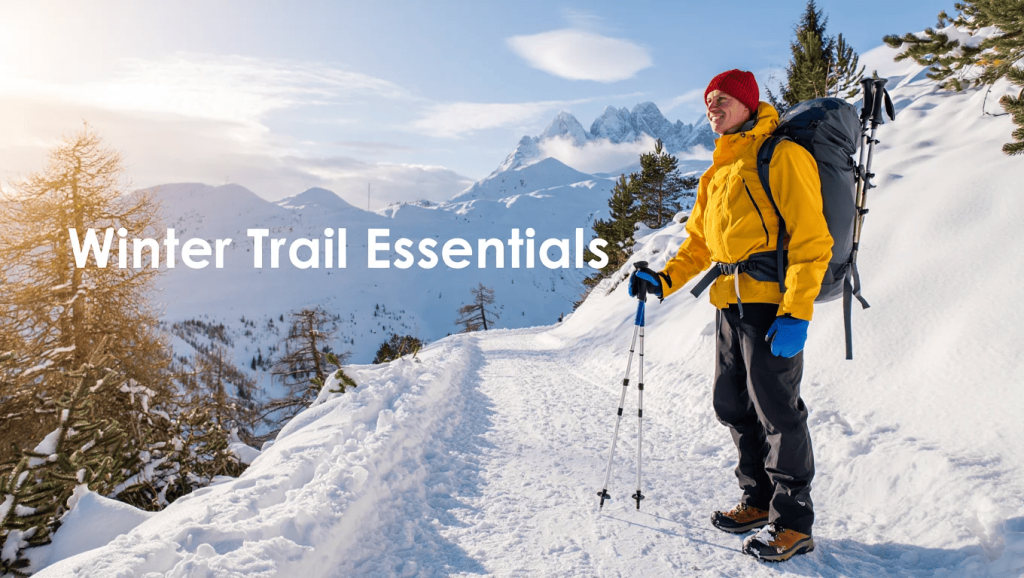The silent beauty of snow-covered trails calls hikers year-round, but winter demands specialized equipment beyond standard gear. Stepping onto frost-coated paths unprepared isn’t just uncomfortable—it can be dangerous.
Proper winter hiking gear creates a crucial barrier between you and the elements, allowing you to experience nature’s most dramatic season safely.
From insulated boots that protect against freezing temperatures to layering systems that manage both sweat and cold, your equipment choices determine if you’ll remember your hike for gorgeous views or miserable discomfort.
As temperatures drop and daylight shortens, your gear selection becomes increasingly important. Find out the essential winter hiking equipment that keeps outdoor enthusiasts warm, dry, and safe during the coldest months.
Why Specialized Winter Gear Matters
Winter hiking presents unique challenges that demand proper equipment. Cold temperatures can quickly lead to hypothermia or frostbite if you’re unprepared, turning an enjoyable trek into a dangerous situation.
Unlike 3-season gear, winter equipment is specifically designed to handle extreme conditions, with better insulation, waterproofing, and durability.
Standard hiking boots and clothing that work well in spring or fall simply won’t provide adequate protection when temperatures drop below freezing. Layering becomes essential in winter – a base layer wicks moisture, a mid layer insulates, and an outer shell blocks wind and precipitation.
This system lets you adjust to changing conditions and activity levels. Weather in winter environments can change rapidly, making preparedness critical. A sunny morning can change into a snowstorm by afternoon.
Having specialized winter gear isn’t just about comfort – it’s about safety. The right equipment creates a buffer between you and potentially life-threatening conditions, allowing you to enjoy winter’s pristine beauty safely.
The Winter Hiking Clothing System
Dressing for winter hiking requires a methodical approach using multiple layers. This layering system allows you to regulate body temperature as conditions change and your activity level fluctuates.
Each layer serves a specific purpose, from managing moisture to blocking wind and snow. Understanding how these layers work together is key to staying comfortable and safe in cold weather.
1. Base Layer
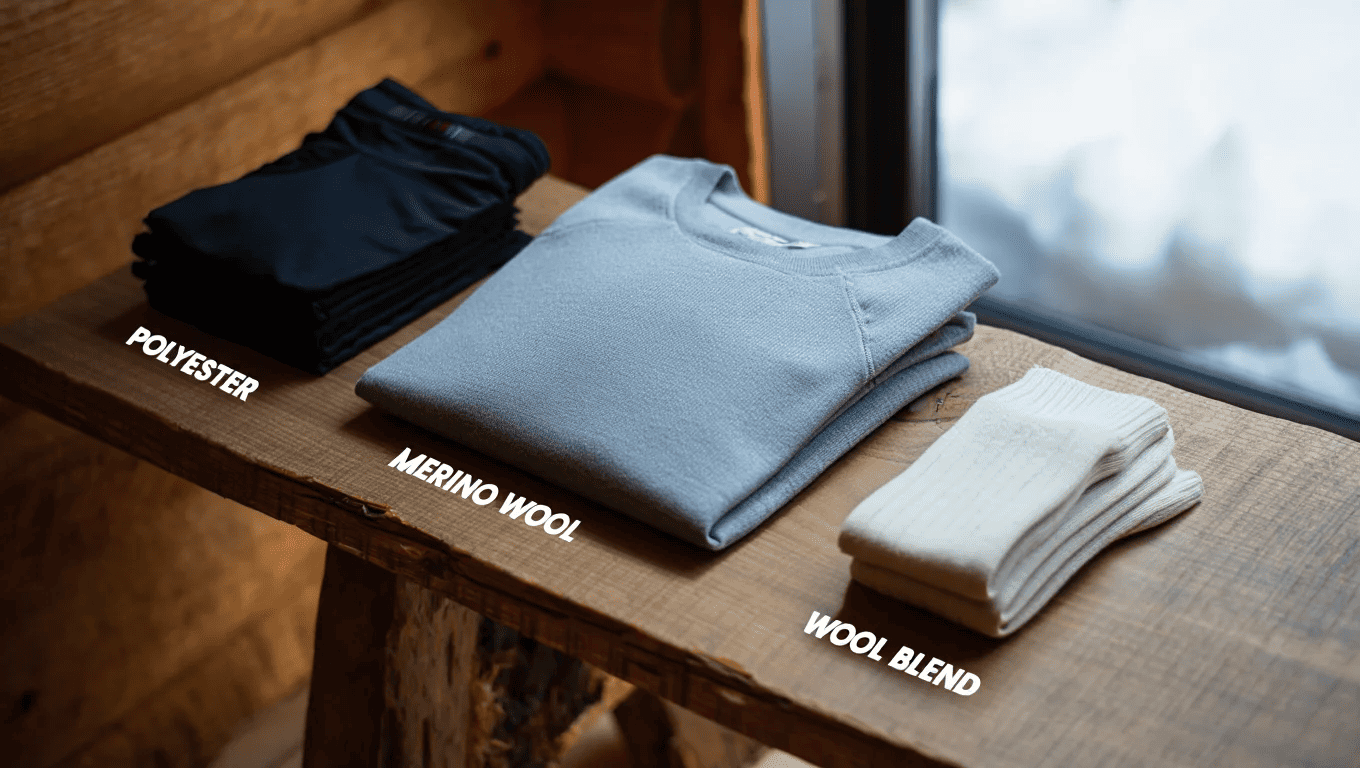
Your base layer sits directly against your skin and plays a crucial role in moisture management. Merino wool and synthetic fabrics like polyester excel at wicking sweat away from your body, keeping you dry and preventing chills.
Cotton is absolutely forbidden for winter hiking as it absorbs moisture and stays wet, rapidly drawing heat from your body.
This cooling effect, helpful in summer, becomes dangerous in winter and can lead to hypothermia. Always choose materials that maintain insulating properties even when damp.
2. Insulating Layer
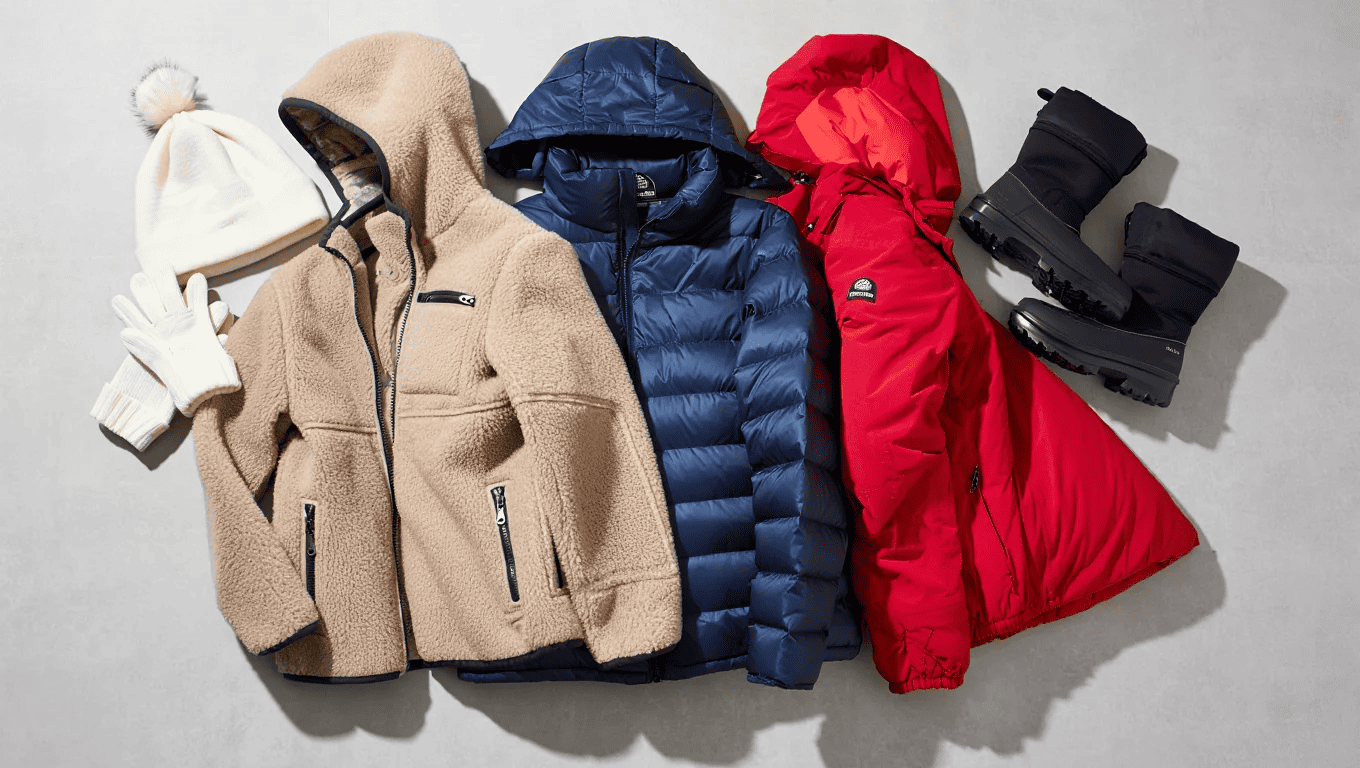
The insulating layer traps warm air close to your body, creating a thermal barrier against the cold. Fleece offers affordable warmth that works even when wet, though it’s bulkier than alternatives.
Down provides an exceptional warmth-to-weight ratio but loses insulating power when wet, making it best for dry, very cold conditions.
Synthetic insulation like PrimaLoft splits the difference – it’s warmer when wet than down but not as warm when dry. Your choice should depend on expected weather conditions and how much you tend to sweat.
3. Outer Layer (Shell)
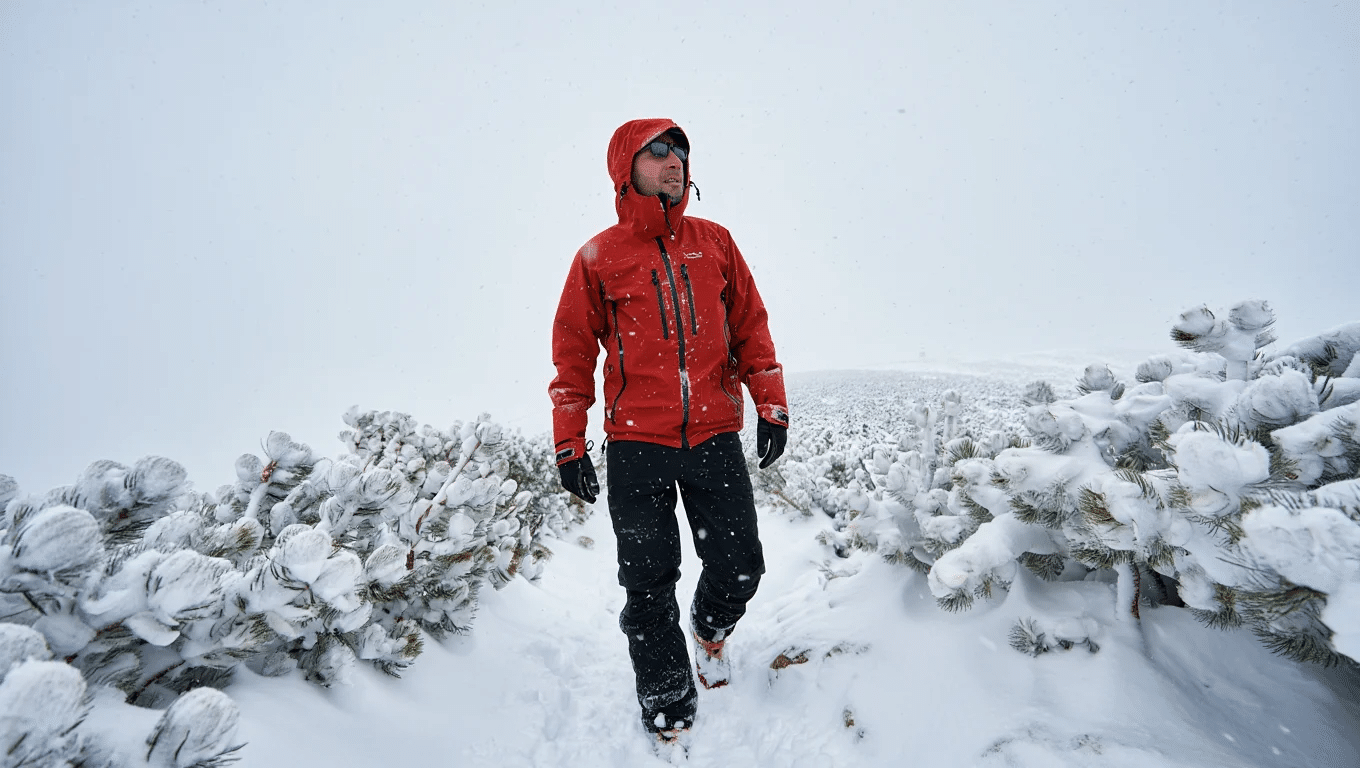
Your outer shell defends against wind, rain, and snow while allowing body heat and moisture to escape. Look for jackets and pants with waterproof membranes like Gore-Tex or similar technologies that block precipitation while remaining somewhat breathable.
Ventilation features like underarm zips (pit zips) and thigh vents are valuable for releasing excess heat during strenuous climbs.
The ideal shell strikes a balance between weather protection and sufficient breathability, preventing internal moisture buildup that can soak through your insulating layers.
4. Accessories
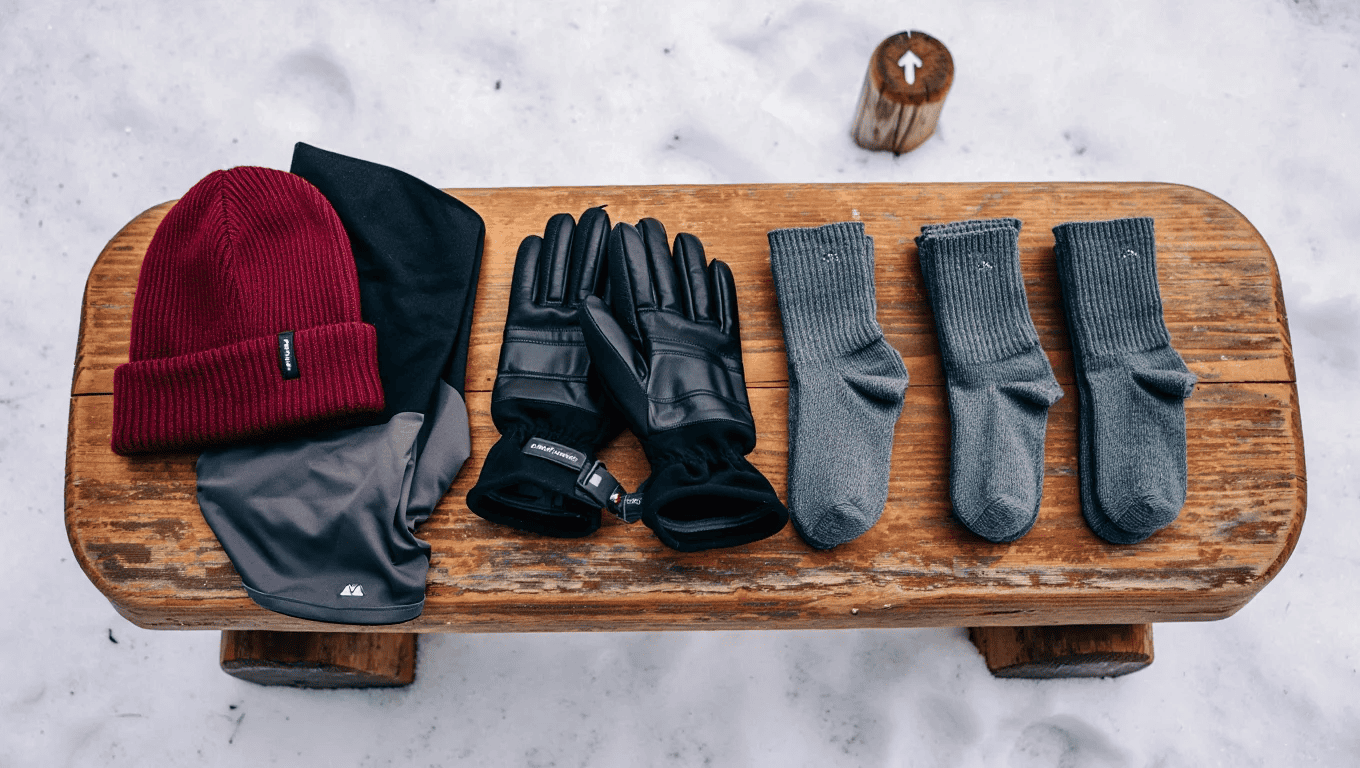
Winter accessories protect vulnerable extremities where heat loss occurs rapidly. A warm hat or beanie is essential as we lose significant heat through our heads.
A neck gaiter or balaclava shields your face and neck from biting winds and can be pulled up over your nose in extreme conditions. Insulated gloves or mittens (mittens are warmer) with removable liners offer flexibility as conditions change.
Complete your system with wool or synthetic thermal socks, possibly in layers, and always carry spares to change into if yours get wet.
Footwear for Winter Trails

Choosing the right footwear is crucial for winter hiking success and safety. Insulated hiking boots work well for moderate winter conditions, while stiffer mountaineering boots are better for technical terrain or extreme cold.
Regardless of boot choice, pair them with gaiters to keep snow from entering the top of your boots and soaking your socks. Traction devices are essential companions.
Microspikes handle packed snow and icy trails, crampons are necessary for steep, icy slopes, and snowshoes distribute your weight across deep snow. To keep feet comfortable, start with dry socks and consider a vapor barrier technique for multi-day trips.
Properly sized boots allow room for thicker socks without restricting circulation. Some hikers use toe warmers on extremely cold days, but be careful they don’t make your feet sweat.
Remember that cold feet can quickly lead to discomfort or even frostbite, so footwear deserves careful consideration in your winter gear planning.
Essential Gear to Pack
Winter hiking demands more equipment than summer outings. Proper gear ensures both comfort and safety in harsh conditions. Your pack will be heavier, but each item serves a critical purpose.
| ITEM | PURPOSE | FEATURES TO LOOK FOR |
|---|---|---|
| Backpack (35- 50L) | Carries winter gear | Snow-shedding exterior, ice axe loops |
| Trekking Poles | Stability on snow/ice | Snow baskets, adjustable length |
| Headlamp | Navigation in short days | Cold-weather performance |
| Emergency Kit | Safety essentials | Reflective blanket, first aid supplies |
| Warmers | Extra heat for extremities | Air-activated, multiple packs |
| Navigation Tools | Finding your way | GPS and/or map & compass |
| Eye Protection | Snow glare defense | UV protection, anti-fog |
Test all equipment before your trip. Keep electronics warm, and always have non-battery backups for wayfinding. Share your route and return time with someone reliable.
Staying Hydrated and Fueled
Proper hydration and nutrition are often overlooked aspects of winter hiking safety. Cold weather hiking requires more energy than summer outings. Yet, many hikers consume less food and water in winter.
Your body works harder in cold conditions, burning calories to stay warm while fighting the elements. Staying properly fueled and hydrated helps maintain core temperature and prevents many cold-weather emergencies.
1. Hydration in Cold Weather
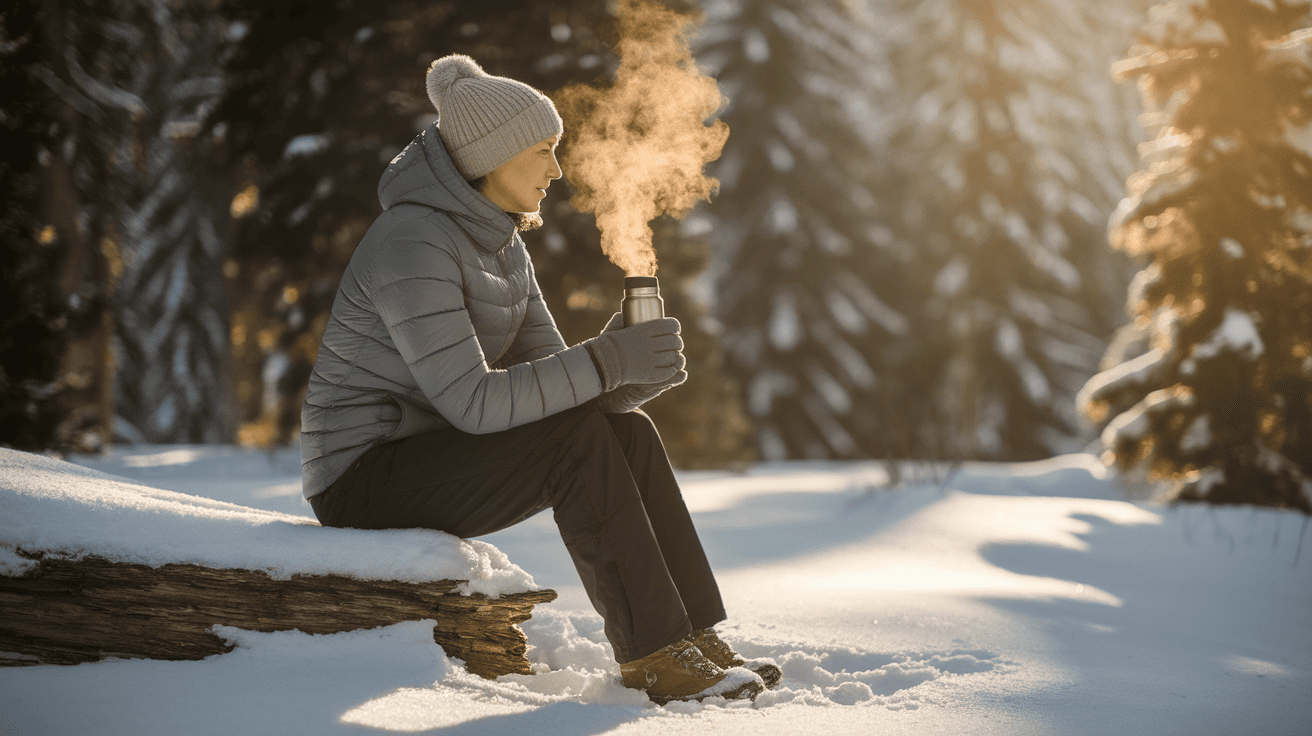
Cold temperatures mask thirst signals, making dehydration a sneaky threat during winter hikes. Your body still loses water through sweat and breathing, but you might not feel thirsty.
Set a timer to remind yourself to drink every 15-20 minutes, even when you don’t feel the urge. Drinking lukewarm or room-temperature water is easier than cold water in winter conditions.
Avoid caffeine and alcohol before and during hikes, as they increase dehydration risk. Remember that proper hydration helps your body regulate temperature and prevents many cold-weather problems.
2. Eating to Stay Warm

Your body burns extra calories in cold weather just to maintain core temperature. Think of food as fuel for your internal furnace—regular snacking keeps the fire burning.
Aim to eat something small every hour during winter hikes, focusing on a mix of quick carbs for immediate energy and fats for sustained warmth. Don’t wait until you feel cold to eat; by then, your body has already begun to chill.
Consuming warm food provides psychological comfort and physical benefits. The digestion process itself generates heat, helping maintain your core temperature.
3. Preventing Water Freezing
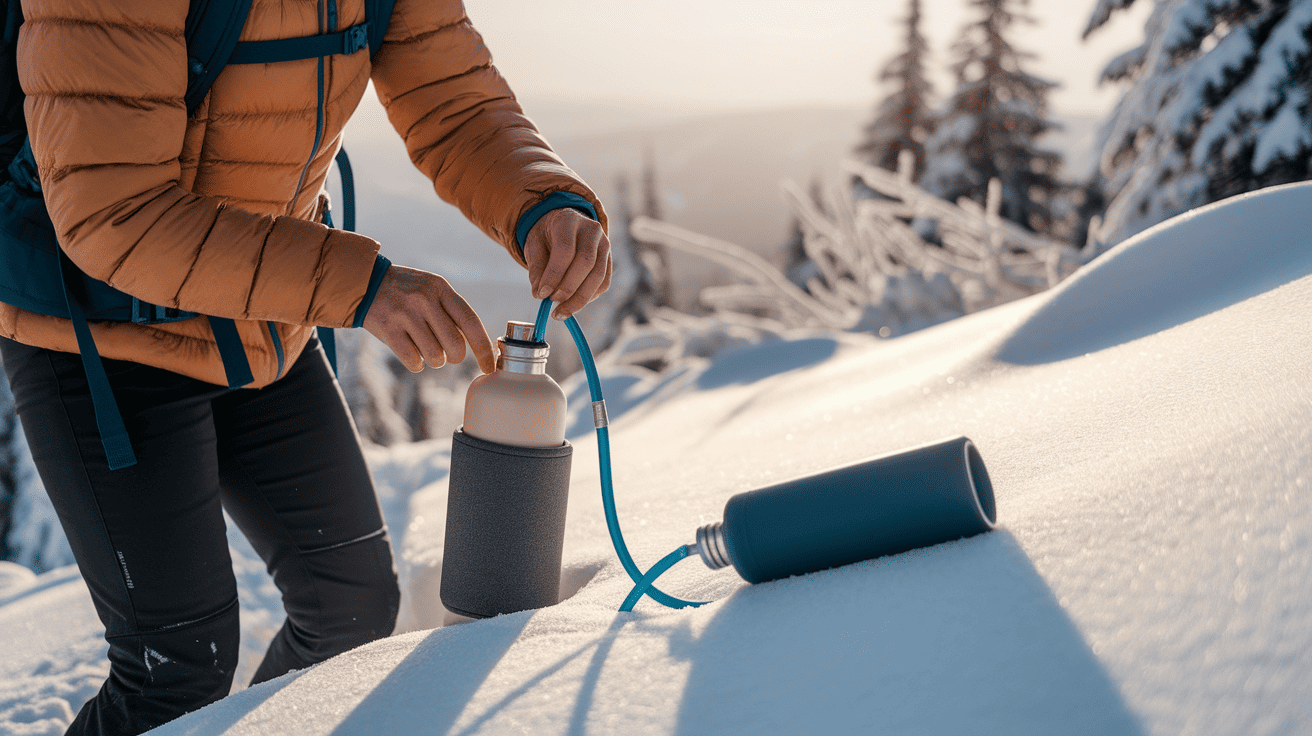
Keep water bottles inside your pack against your back, where body heat helps prevent freezing. Start with hot water in insulated bottles—it takes longer to freeze and provides a warm drink early in your hike.
For hydration reservoirs, blow air back into the tube after drinking to prevent ice forming in the line. Insulated tube covers provide additional protection.
Carry bottles upside down, as water freezes from the top down. On extremely cold days, tuck a bottle inside your jacket during breaks or wrap it in an extra layer.
Safety Tips for Winter Hiking
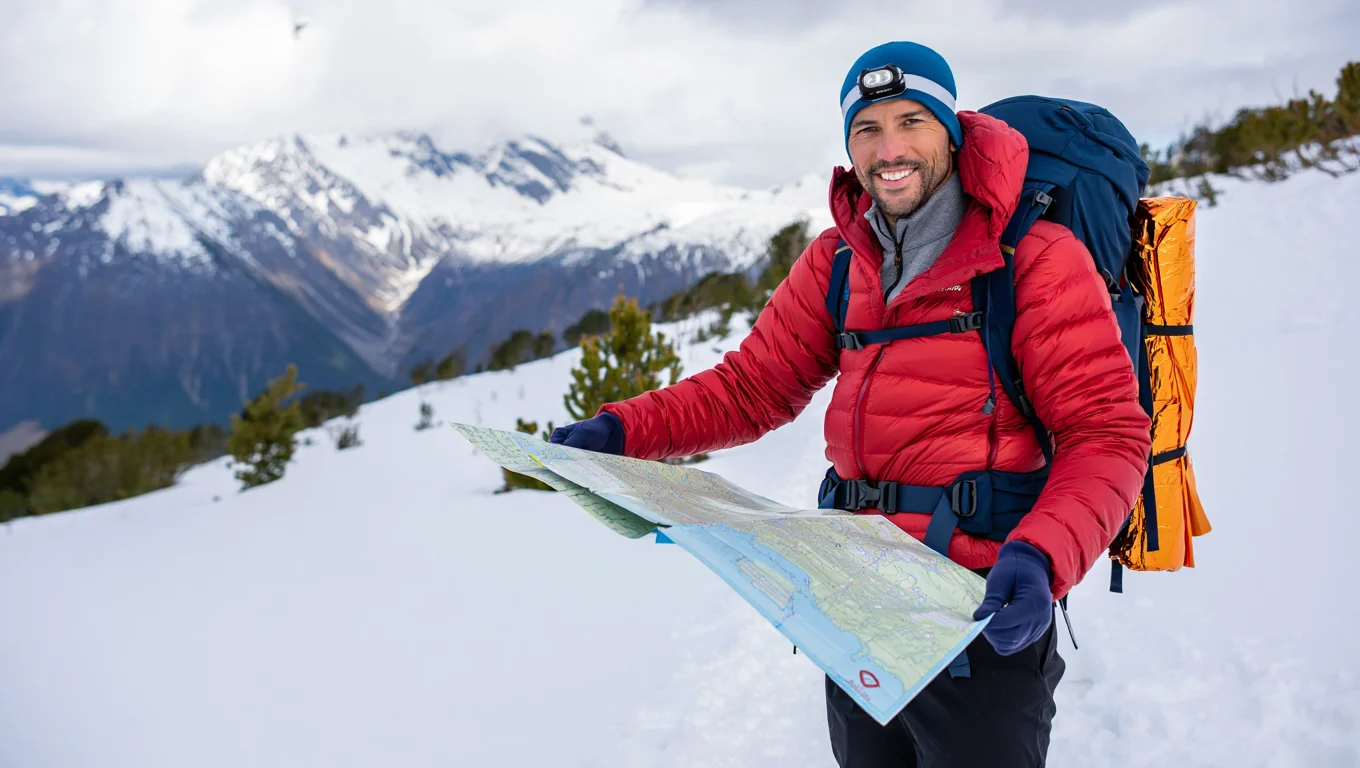
Winter hiking brings additional hazards that require careful preparation. Cold environments leave less room for error, and help may be harder to reach.
- Check detailed weather forecasts and be aware of changing conditions.
- Inform a reliable person of your destination and expected return time.
- Know the signs of hypothermia (confusion, shivering) and frostbite (pale skin).
- Carry extra layers and emergency shelter even on short hikes.
- Start early to maximize daylight and allow extra time.
- Check avalanche conditions in steep terrain.
- Turn around if conditions worsen or you feel uncomfortable.
Winter trails require more caution than fair-weather hiking. There’s no shame in turning back when conditions aren’t right. Stay alert, make conservative choices, and enjoy winter’s unique beauty safely.
Summing It Up
Winter trails offer solitude and scenery impossible to find in busier seasons, but only for those properly equipped.
The right winter hiking gear isn’t about buying the most expensive items—it’s about understanding how each piece works together in a comprehensive system.
Your boots, layers, accessories, and emergency supplies form an integrated defense against winter’s challenges. As you build your cold-weather kit, focus on versatility, quality, and functionality rather than trends.
Remember that winter conditions change rapidly, so adaptable gear provides the best protection. With proper equipment and knowledge, you’ll find a whole new dimension to hiking—one where familiar trails change under snow and ice into magical landscapes few ever experience. Stay warm, stay dry, stay safe.
Come back for more helpful travel tips, gear recommendations, and campsite reviews.

